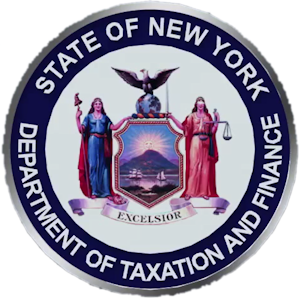Originally published on Forbes.com May 20th, 2013
Out of state investors in real estate partnerships in high tax states sometimes get nasty surprises, particularly if partnership management is not sensitive to their concerns. That appears to be what happened to Craig Olsheim based on a recent decision in the State of New York Division of Tax Appeals. Mr. Olsheim inherited an interest in Fifth Avenue Building Associates, LLC in 2004. In 2005, Fifth Avenue sold its only asset and dissolved.
Unless people were getting fancy with valuation for estate tax purposes or the value of the underlying property skyrocketed in a very short period, you would expect that the transaction would be close to a wash for federal income tax purposes. Why should it be any different for state income tax purposes ? Well here is what happened
Since the partnership did not allow petitioner to make an election to adjust his inside tax basis related to this inherited interest pursuant to IRC §754 in 2004, petitioner’s outside basis of his partnership interest exceeded his inside basis in the partnership property. Upon the sale of its only asset, Fifth Avenue was completely dissolved. As he did at the federal level, petitioner offset on his 2005 New York State return, as a deduction, a capital loss resulting from the difference between his outside tax basis and his inside tax basis in Fifth Avenue against the gain realized on the sale of the office building.
I have a little bit of a quibble with the Appeals Division, partnerships do not “allow partners” to elect to adjust inside basis, the partnership itself makes the election or does not. It is an irrevocable election binding on the partnership for all future transactions.
The key number that we have, in the case, is that Mr. Olsheim had a gain flow-through of $236,674 from the partnership and reported a capital loss from the disposition of the partnership interest in the same amount. I would infer from this that his father’s estate valued the partnership interest based on the liquidation proceeds. The timing is right, since, with extension, an estate tax return is due 15 months after date of death. The flow-through gain would have pumped up the basis in the partnership interest resulting in a capital loss on liquidation.
If a 754 election had been in effect, there would have been a lower flow-through of gain from the partnership and a modest or no gain or loss on liquidation. The lack of the inside-basis might have minimal effect on federal tax due, since the capital loss on liquidation of the partnership would offset the flow-through gain. There likely would have been no state income tax effect either, if Mr. Olsheim had lived in New York. The capital loss would be included in the computation of his New York state income tax.
That is not the way it works out for a non-resident. The non-resident is taxed on the flow-through of gain from the partnership’s disposition of its asset. Gain or loss from the disposition of a partnership interest was not reflected on a non-resident’s New York return in 2005. The disposition of the partnership interest itself is a sale of an intangible asset, which sources to the state of domicile or at least it did in 2005. This particular rule will often work in favor of taxpayers so it has been changed, although as the Division noted, too late to help Mr. Olsheim:
Furthermore, the fact that such was the state of the law was acknowledged by the Legislature when it added Tax Law §631(b)(1)(A)(1) to require nonresidents to include as a source of income the gain or loss resulting from the sale of a partnership interest.
Unfortunately for petitioner, the legislation that added Tax Law §631(b)(1)(A)(1) specifically provided that it would “take effect immediately and shall apply to sales or exchanges of entity interests that occur thirty or more days after the date this act becomes law”
Why Didn’t Management Accommodate Him ?
The case does not discuss what the underlying asset of Fifth Avenue was. It appears pretty likely that it was the International Toy Center a two building complex consisting of 200 Fifth Avenue and 1107 Broadway not very far from the iconic Flatiron Building. This listing indicates that an entity with the name Fifth Avenue Building Associates LLC sold the International Toy Center in March 2005. According to this story the then ownership group had a fifty year history. The sale was for $355,000,000 and you have to think that there was a high gain percentage implying that Mr. Olsheim was a less than 1% partner. Unless the partnership were willing to use risky shortcuts, the cost of implementing the election might have dwarfed Mr. Olsheim’s extra New York tax. It does strike me as a little odd that there was not a 754 election already in place given what can happen in the course of fifty years, but there are many possible explanations for that.
The Lesson
If you only do things in your own state you will generally find that your state and federal tax run along similar lines, particularly if you live in one of those rectangular shaped states that people fly over when going from coast to coast. When you invest in flow through entities in other states, things may start getting peculiar particularly with some East Coast states. Mr. Olsheim’s story is not nearly as sad as that of the investor in the US Steel Tower in Pittsburgh, which I dubbed the Tax Shelter from Hell, but it is sad enough.
You can follow me on twitter @peterreillycpa.































































































